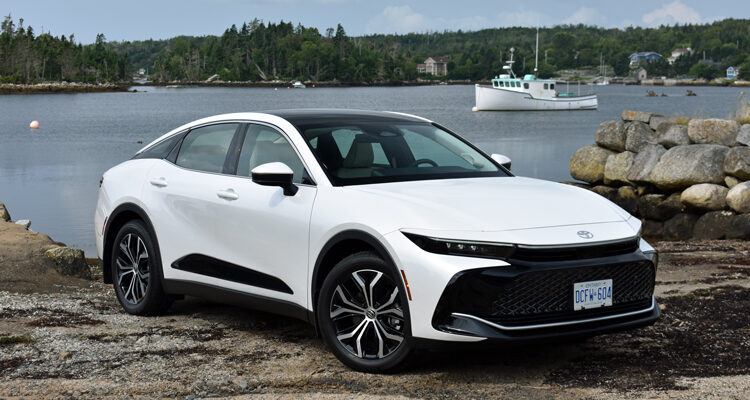The second leg of Toyota Canada’s 60th Anniversary coast to coast drive took us from Halifax Nova Scotia to Montréal Québec.
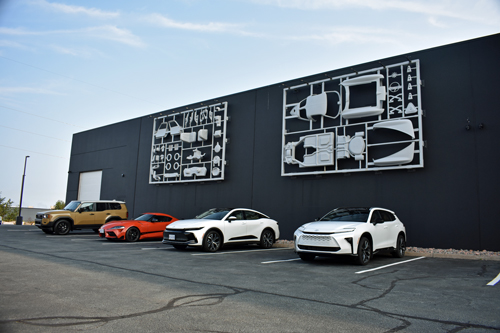
I had been paired up with Daniel Beaulieu who I had not previously met. We turned out to be brothers from different mothers, both being engineering grads, and sharing tastes in music. The first of many happy coincidences along our three-day jaunt.
The official mileage of Leg 2 was 1,637 km, although we back-tracked a lot, searching for better photos, so we probably racked up closer to 1,800…
Along the route, we stopped at several Toyota dealerships, and met their key staffers, some of whom started with Toyota many years ago, and some who were second or third generation Toyota people.
More details on them and Toyota’s Canadian history to follow.
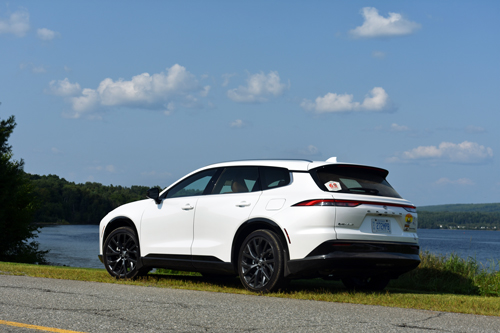
Crown Jewel(s)
Our first leg out of Halifax was in the Crown sedan. This is a stylish, spacious, four/five seat car, with good performance, decent handling, and all the comforts of home.
On the downside, like many Toys, when you can set the SatNav screen to the “North Up” orientation, select any other function on the screen, then return to SatNav, it reverts to “Direction of Travel’. Why? No clue.
And the shifter is beyond hopeless, requiring about five movements to get the selection you want. “PRNDL” rules!
I’ll skip ahead to the last car we drove, because it was also a Crown – a station wagon! As I have said many times, the station wagon is the most intelligent form of automobile. You get the driving dynamics of a sedan, with the carrying capacity of an SUV. Yet a wagon weighs less than an SUV, costs less to buy, uses less fuel, is probably more aerodynamic, less likely to roll over, and puts less strain on our road infrastructure.
Of course, car makers can’t throw station wagons off buildings onto unsuspecting customers, so Toyota calls it the Crown “Signia”. I guess if you’re riding in one, you are “InSignia”.
Sorry…
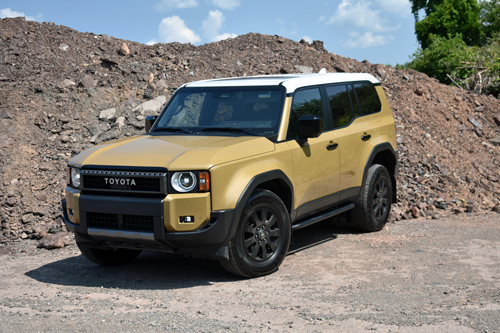
Our Signia had warning labels on the dashboard indicating it was a pre-production prototype, and that certain details in fit and finish might not be up to snuff. Couldda fooled me, although Daniel felt the driver’s seat comfort wasn’t as good as in the sedan. Otherwise, it drove and handled like the sedan; it just carries more stuff.
The other two vehicles we were assigned were the Supra sports coupe, and the Land Crusher (er, “Land Cruiser”) SUV.
I expected the Supra to be my favourite of our four, and the Land Cruiser to be the least.
Which is why one should not have preconceptions.
Or, in my case, prejudices.
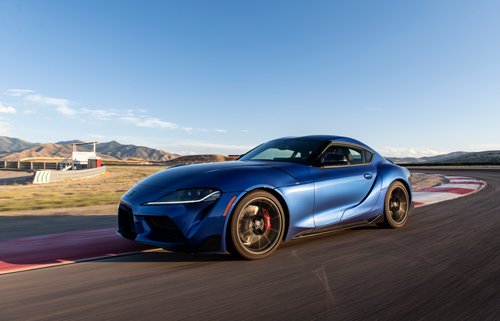
That’s because “post-judice” (my neologism for “judging-after” rather than “before”), those positions were swapped. The Supra which we nicknamed the “BMWoyota” because it shares more than just its Bavarian counterpart’s 3 litre inline 382 horsepower six-cylinder engine and six-speed gearbox with Bimmer’s 4 series coupé. In place of the clear (if not always “North Up”) Toyota SatNav screen, it had a tiny and even more confusing unit which we never did completely figure out.
Both Daniel and I had difficulty finding a correct driving position in this car. If we had the steering wheel in the correct spot, the pedals and shift lever seemed too far away.
The suspension was also calibrated for spirited driving. Normally, I’d be all over that, but on many of the pock-marked roads we drove on, it was unnecessarily jiggly. There was also a lot of road noise, probably from the performance tires.
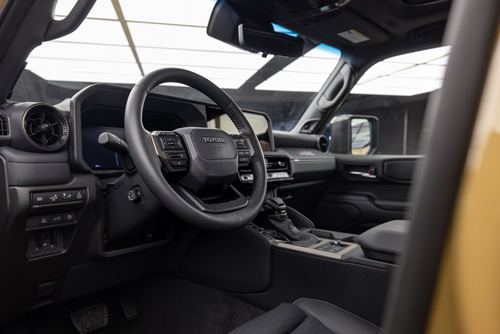
It did however have sufficient room in the trunk for all our gear, which included a suitcase and a camera bag for each of us, so two brownie points there.
The Land Cruiser SUV returns to Canada for the 2024 model year after a 35 year “hiatus” (as Toyota calls it). Whenever you see video of an army vehicle manoeuvring around in a desert or a jungle, chances are it will be a Land Cruiser. When soldiers’ lives are at stake and reliability is king, this is the vehicle you want.
Ours rode surprisingly well for a big SUV. Comfortable seats, loads of luggage space, and apart from some wind noise from the “brick wall” aerodynamics, commendably quiet. The 2.4 litre turbocharged hybrid powertrain provides a combined total of 326 horsepower and 465 pound-feet of torque, more than sufficient for on- or off-road driving. We both enjoyed this one, and I’m not generally an SUV fan.
Museum Piece(s)
Perhaps the most iconic event in the history of Nova Scotia’s capital city of Halifax took place on December 6, 1917. A French cargo ship, the SS Mont-Blanc, laden with high explosives, collided with the Norwegian freighter SS Imo, creating one of the largest man-made explosions in history, causing nearly 2,000 deaths and innumerable injuries. The legacy lives on, with monuments such as the Halifax Explosion Memorial Bell Tower, and the site where the 517 kg (1,140 lb) anchor shaft of the Mont Blanc landed some 4 km (2.5 miles) from the explosion site.
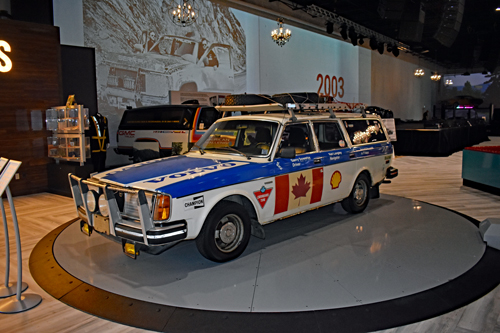
If you’re buying a new car of any brand in Nova Scotia, there’s a good chance you’re buying it from Rob Steele, who runs one of the largest multi-line dealer networks in Atlantic Canada. More important for our purposes here, he recently opened “Steele Wheels Motor Museum”, which is billed as “Halifax’s premier classic and exotic car museum”. The 3,716 square metre (40,000 square feet) facility features over 75 classic and custom cars and motorcycles.
The first vehicle you come to as you walk in is the Nova Scotia-built 1980 Volvo station wagon that local boys Gary Sowerby and Ken Langley drove around the world in just 74 days, easily beating the Jules Verne novel’s standard of “Around the World in 80 Days”.
Also on hand is Sowerby’s 1988 GMC Suburban Diesel, which he and Tim Cahill drove from Tierra del Fuego to Prudhoe Bay Alaska. Geez guys, Nova Scotia is so beautiful; why did you keep leaving?
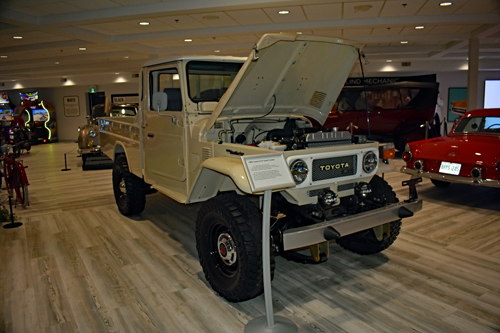
OK, so these trucks weren’t Toyotas. They are still remarkable pieces of Canadian automotive history.
Among the other vehicles on display, one particularly appropriate for our visit, was a 1985 Toyota HJ-47 Land Cruiser pick-up truck. There are also several iconic domestic and imported cars, all beautifully restored.
National Icon(s)
From there, we headed to Peggy’s Cove, perhaps the most photographed scene in the entire country, which didn’t stop me from adding to that list. One particularly interesting sign warned, “Injury and death have rewarded careless sight-seers here”. Negotiating the slippery rocks with nary a guard rail in sight suggested the signs aren’t kidding. My Pilotis gripped well, and I’m here to tell the tale.
You’re never far from the ocean in Nova Scotia, so Daniel and I tried to find photo ops that maybe other teams did not. Car, ocean, fishing boats – hard to go too far wrong.
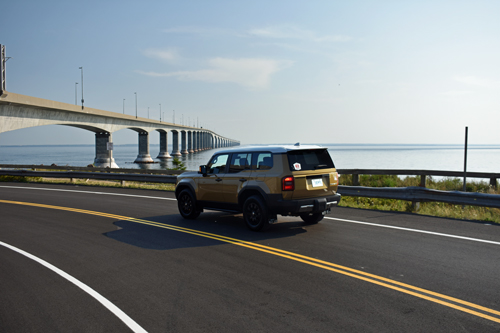
At lunch, we swapped into the aforementioned modern Land Cruiser, then headed for the massive 12.9 km (8 mile) Confederation Bridge to Prince Edward Island. Construction of Canada’s longest bridge, also the world’s longest bridge over ice-covered water, followed decades of discussion and opposition from many Islanders who feared their quality of life would be destroyed by an influx of tourists. Construction began in 1993, and it was opened in 1997. There is no toll to get ONTO the Island, but you have to pay to leave. Canny folk, those Islanders.
Everybody who has ever crossed this bridge has tried to take “the” photograph of it. We were no exceptions. Judge for yourselves.
Hence, on to New Brunswick which has two huge natural attractions. The tidal bore on the Petitcodiac River, caused by the moon’s gravitational pull on the waters of the funnel-shaped Bay of Fundy, shoves the water up stream, to a height reaching up to 75 cm. It runs on its own schedule which did not coincide with ours, so we missed it.
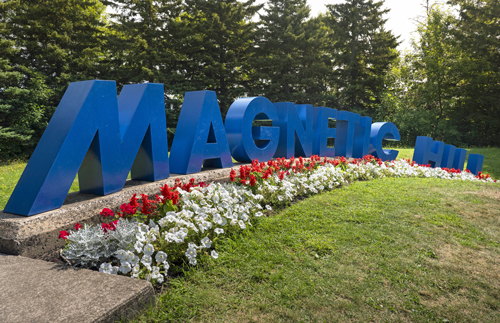
But the Magnetic Hill operates 24-7. It’s effectively an optical illusion, created by the rising and descending terrain. We experienced our Land Cruiser “backing” up the hill at about 12 km/h, with our right foot well away from the loud pedal, which seems to be an impossibility. I’d done this before, but it never fails to amaze.
One semi-historic site Daniel and I almost stumbled upon was “Nackawic New Brunswick, the home of the world’s largest axe”. I say “stumbled upon” because we were looking for a lakeside photo op, made a wrong turn, and just came across this sign. I say “almost” because while we did find the photo op, we were pressed for time and never actually got to see the axe. Next time.
Once on the road back westward from Moncton, there weren’t many “must sees”, historically or geographically speaking. I had a plane to catch, so apart from visiting a few more Toy Stores, we just AutoRoute’d our way back to Montréal.
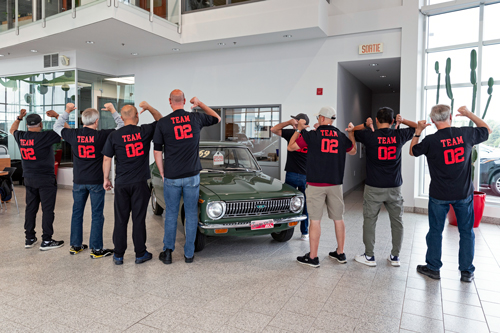
Making thing(s) happen
Hector Dupuis was hired as the eastern Canada regional manager for Canadian Motor Industries, the original importer of Toyotas to Canada. He was one of their first employees, if not the very first, and his main task was to recruit dealers throughout the country.
In January 1965, CMI set up three dealerships, in Montreal, Toronto, and Vancouver. The first shipment of 217 Crown sedans arrived 2 months later, followed by the “Publica” and “Land Cruiser”. By the end of 1965, the company had 48 dealers, 55 employees, and sold 755 vehicles. Toyota Canada now sells that many vehicles in a day.
Their dealer network today is a combination of modern multi-line mega-stores, and smaller “Mom-and-Pop” stores which have been significant parts of their communities for decades, through multiple generations of ownership.

Sadly, space does not allow me to explore each store in much detail. But if you’re ever in Halifax, drop in to O’Regan’s Toyota and say hello to Mike Stephens, the General Manager.
Acadia Toyota is located in Moncton New Brunswick, and Dealer Principal Matt Girvan would be happy to chat.
At Lévis Toyota in (aw, you guessed) Lévis Québec, opened in 1967 as Métivier Toyota. It was started by Almanzor Métivier and his son Jean-Yves. Jacques Emond, now the General Manager, would be pleased to meet you.
And Mauricie Toyota in Shawinigan Québec was the first Toyota store in Québec and one of the first in Canada, opening in 1965. Jocelyn Brouillette is now the Dealer Principal and General Manager there.
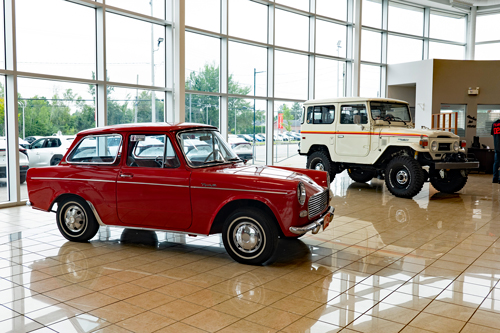
Consistent with their policy of building cars where they sell them, Toyota opened its first Canadian plant in Sydney Nova Scotia in 1968, assembling Isuzu Belletts and Corollas. It closed in 1975, but you can read all about Toyota’s origins in Canada in Dan Heyman’s report from the first leg of this journey.
Toyota Motor Manufacturing Canada (TMMC) opened its first Cambridge Ontario plant (“TMMC South”) in 1988. In May 2000, it became the first plant outside of Japan to manufacture a Lexus model. A second Cambridge plant (“TMMC North”) opened in 1997, and a third (“TMMC West”) launched in Woodstock Ontario in 2008.
Toyota claims to be the number one manufacturer of vehicles in Canada, and also has won all sorts of awards for their quality.
A long and storied history, one that was fascinating for us to explore.
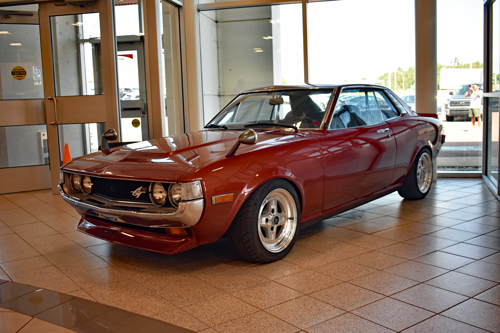
There’s even a personal connection here. Two of my kids had summer jobs at various of the Ontario Toyota plants. One of these days, I’ll tell you some of THEIR stories…



